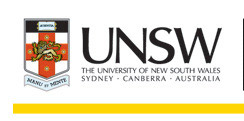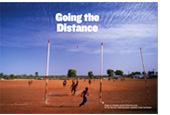Battlers or Billionaires – Australia and China in the
long run
By Tim Harcourt*
We get a lot of free advice from billionaires about
how to deal with our largest trading partner China.
First, we had James Packer – who has extensive Casino
interests in Macau – who said we didn’t ‘bow enough’ or treat our trading
partners with enough deference.
Then, at the other end of the spectrum, we had Clive
Palmer’s outburst on the ABC and the subsequent follow up from another member
of his party, Tasmanian Senator Jacqui Lambie, that strayed into the dangerous
defence realm.
Both these billionaire interventions caused ripples in
Beijing, particular the more colourful Palmerian references to ‘mongrels’ and
‘bastards’. Clive Palmer has since apologised. But does either really have an
impact on the long term trading relationship between China and Australia?
If you look at all the Prime Ministers, from Whitlam
to Abbott, all have forged strong links to China. For instance, Bob Hawke
looked to China with his adviser Ross Garnaut’s report Australia and the North
East Asian Ascendancy, Paul Keating supported China’s entry in the WTO, John
Howard formed close ties with Hu Jintao on APEC, and Julia Gillard has her
moment in Sino-Australian diplomacy with the renminbi currency conversion.
Now Tony Abbott has his big opportunity with a
possible Free Trade. If Abbott is successful Australia will have forged a
unique hat-trick of FTAs with our three most important trading partners – South
Korea, Japan and China – in a year and a half. It’s a great achievement.
But while things seem to be going swimmingly at the
highest level, are Clive Palmer and Jacquie Lambie tapping into scepticism or
even fear in the Australian community? And is it justified?
To answer that question, you have to say that
China has played an important role in Australia’s economic development over the
past three decades, in the same way that Japan did as it was industrialising in
the 1950s, 1960s and 1970s. As a result China is our largest trading partner,
accounting for $141,947 million or 28.2 per cent of total Australian
merchandise trade.
Further, exports create jobs for Australian workers
and China as our number one export destination plays and important role in
improving conditions in the Australian labour market. Austrade-ACTU-UNSW
research shows that on average, exporters pay 60 per cent higher wages than
non-exporters, provide better occupational health and safety (OH & S),
education and training, employment security and equal employment opportunity for
women.
So what’s the future of the Sino- Australia trade
relationship?
While iron ore and coal is a big part of the story,
Australia will move from the mining boom to the dining boom. Australia can’t
feed China on our won but we can help China feed itself. Even so, expect
‘rocks’ (resources) to dominate the primary export ledger of ‘rocks and crops’
for some time to come.
In some ways, China’s development is as much about
urbanisation as it is about globalisation and Australia will play a big role in
servicing of the second and third tier cities, places like Chengdu, Wuhan,
Chongqing, and Qingdao that my Chinese friends tell me are ‘country towns’.
When I arrive I realise they are country towns of over 10 million inhabitants!
This means opportunity for Australian architects like Place Design who moved
their office from Brisbane to Chengdu to meet the insatiable demand for
landscape gardening in Sichuan province, or Sunshine Coast horticulture company
Bassett Bark that has found China to be a happy hunting ground. In fact the
AGSM MBA Education course I teach “Doing Business in China” now includes
western china – with Chengdu and Chongqing as well as the “Bright lights big
city” of the coastal economic mega cities of Shanghai, Beijing and of course,
Hong Kong.
In fact, the story of China’s structural reform is not
only rural-urban migration but also transforming itself from being a nation of
‘shippers’ to a nation of ‘shoppers’. It wants to rely less on exports
(shippers) and more on domestic consumption (shoppers) and investment. Middle
class incomes are on the rise along with demand for consumer goods once
considered a luxury in China. That’s why Rheem hot water (remember the jingle
‘install a Rheem’) is now based outside Chengdu to service the domestic market
and BlueScope is based outside of Shanghai to transfer steel locally free of
tariffs. Add to this the opportunities in the professional services sector
like, architecture, landscape design, education and financial services (China
still has a banking system that needs to mature and be more globally
integrated.
In fact, Australia’s export relationship is more
broadly based than people think at first glance. According to ABS data, over
5600 Australian small and medium sized enterprises (SMEs) now export to China (plus
another 4900 via Hong Kong) and over 3000 are based there and are succeeding.
Australian SMEs battle their way into China and over time many have forged a
reasonable business through time and enduring relationships.
So, maybe we should listen more to the little Aussie
battler in the SME sector and less to our billionaires when seeing how to
succeed in China in the long run.
*Tim Harcourt is the
JW Nevile Fellow in Economics at UNSW Business School and author of Trading
Places – The Airport Economist’s guide to International Business: www.theairporteconomist.com
He teaches in China as part of the AGSM’s MBA
Course in International Business and was previously Chief Economist of Austrade













No Comments so far ↓
Comments are closed.